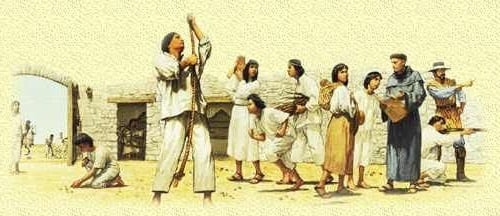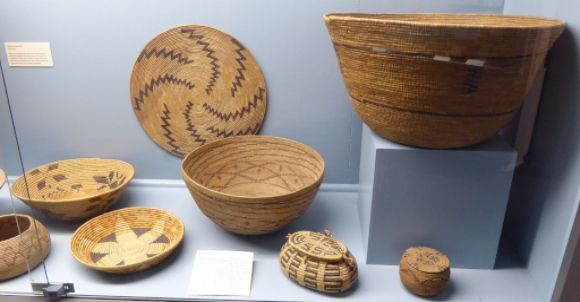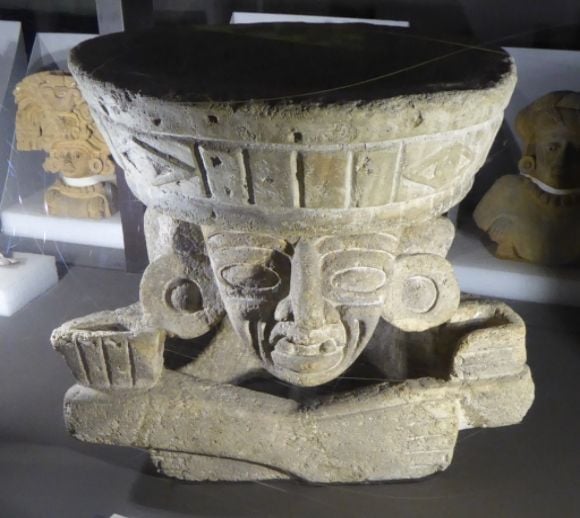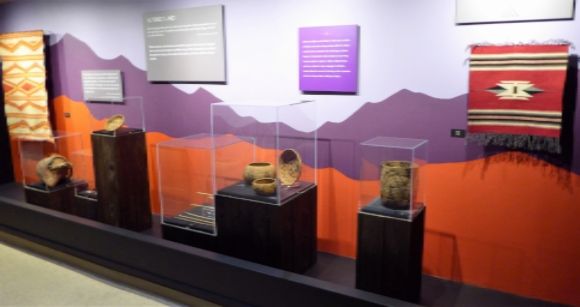California’s Mission Indians

( – promoted by navajo)
At the time of first European contact, California had the widest variety of Native American languages and cultures in North America: there were more than 100 languages, making it the most linguistically diverse area in North America. We don’t know exactly how many tribes there were in California prior to the Spanish invasion. Today, there are many different Indian nations in California which are classified as “Mission Indians.” There are many tribes, such as the Luiseño, Gabrielino, and Juanino, who take their names from the Spanish missions rather than their aboriginal designations. In order to understand how these Mission Indian nations were formed, we must start by looking at the Spanish missionary efforts in California.
The Spanish entered the Americas driven by the Three Gs: Gold (some authors prefer to use Greed), Glory, and God. The massive amounts of wealth that the Spanish acquired through their conquests of Mexico and Peru inspired expeditionary forces to move north into Florida, New Mexico, and California. In all of these areas, the initial invasion was a Christian missionary force backed up by soldiers.
The Spanish missionary program was designed to bring about the total conversion of the Indians: to change them from pagans into Christians and from Indians into tax-paying Spanish citizens. This process was envisioned as having four basic stages:
(1) misión (mission) which was to include initial contact and the explanation of the importance of God and the King. Spain, like other European nations, operated under the assumption that non-Christian nations were base and immoral, and the church was obligated to effect conversion. The Spanish were steeped in a legacy of religious intolerance and conformity which featured a messianic fanaticism accentuating both Spanish culture in general and Catholicism in particular.
(2) reducción (reduction) which was to reduce the Indians’ territory by bringing them into a segregated community centered around a church. Indian people did not come joyously or freely to live and work at the new missions. Soldiers simply snatched Indian families from outlying hamlets to convert them, change their social habits and turn them into a New World peasantry. The Indian response to the missions was to flee, either in small groups or in large groups.
(3) doctrina (doctrine) in which the Indians would receive instructions on the finer points of Christianity.
(4) curato (curacy) in which the Indians would become tax-paying citizens.
The formation of the Mission Indians began with the Spanish policy of congregación: the forced resettlement of Indian populations in nucleated settlements. The formation of large communities facilitated the conversion to Catholicism of the Indians. Many priests felt that it was a burden to have to visit the many small dispersed Indian communities. It was also easier for royal officials to collect tribute and organize labor drafts in the new larger communities.
The missionaries, with the help of well-armed soldiers, congregated Indians into fairly large communities which were organized along the lines of those in the core areas of Spanish America. Here Indian converts were to be indoctrinated in Catholicism and taught European-style agriculture, leatherworking, textile production, and other skills deemed useful by the Spaniards. By using Indian labor to produce surplus grain supplies for the Spanish military garrisons, the Franciscan missionaries were able to view Indians as both potential converts and labor.
The Franciscan missions were basically slave plantations which required the Indian people to work for the Spanish under cruel conditions. Indians did not come freely to the missions and once there, they were held against their will. Many attempted to escape, and the soldiers stationed at the mission would attempt to recapture them. Escape attempts are severely punished by the Franciscans.
The Franciscans, backed by a small number of soldiers stationed at the missions, imposed a rigid system of coerced and disciplined labor, enforced by the use of corporal punishment and other forms of control. This punishment including public flogging, and the use of the stocks and shackles. While the public use of corporal punishment humiliated and physically injured the individuals being punished, and it did not necessarily alter or control the behavior that the Franciscans found objectionable.
One early visitor to the missions remarked about the Indians that “I have never seen one laugh.” Most of the Indians died in the new mission environment.
The Spanish sought to Christianize the Indians by enslaving them. The Spanish intent was to expropriate not only Indian lands and resources, but Indian labor as well. Part of their goal was to obliterate all features of Native American culture and society and to create a replica of Spain in California in which land-owning Spanish would be served by an Indian peasant class.
From the viewpoint of the Spanish, Indians were a form of labor which could be exploited. The success of the Spanish colonies in the Americas were based on this exploitation. In order to maximize the profits of their colonial enterprise, the Spaniards created institutions that siphoned off surplus agriculture products and provided labor for major building projects. One of these Spanish institutions was repartimiento.
Repartimiento was the Spanish policy which gave the Spanish colonists the right to use native labor for religious education. Repartimiento functioned as a part of the Spanish mission system in all parts of the Americas, including California. Under this system, labor quotas and the conscription of people to serve on labor gangs were organized through the villages served by the missions (or, from an Indian viewpoint, the villages which served the missions).
In addition to using Indian labor for themselves, the Franciscans also provided Indian labor for both military garrisons and for individual Spanish colonists. Access to mission Indians gave settlers additional labor at key points in the agricultural cycle, as well as for other uses, such as building construction. In other words, the Spanish colonization of California would have been more difficult without the Indian slave labor.
The Death Toll in the Missions
The death rate among Mission Indian was quite high-high enough that it alarmed the Spanish officials. In 1797, the Spanish governor outlined the causes for the high Indian mortality rates in the missions: (1) the heavy work load and poor diet of the Indians living in the missions, (2) the practice of locking women and girls in damp and unsanitary dormitories at night, (3) poor sanitation, and (4) loss of liberty and mobility in the missions.
The governor’s report described the dampness in the dormitories and reported that many did not have even a single blanket to use at night. The use of the dormitories for the women and girls was a form of social control as the missionaries felt that the Indians were promiscuous. Thus they used the dormitories to protect and control the virtue and virginity of single girls and women.
One of the problems of congregation was that it placed large populations in fairly spatially compact communities. This contributed to problems of sanitation and water pollution. It also facilitated the spread of disease.
Death rates were chronically higher than birth rates among the Mission Indians and this meant that for the missions to maintain their Indian workforce they had to continually “recruit” from the outlying tribes.
In the California missions, the new European diseases-smallpox, mumps, measles, malaria- killed many of the Indians who were forced to live there. The Mission Indians also died from respiratory ailments and illnesses caused by poor sanitation. They died from syphilis-introduced to the Indians by the soldiers and the colonists-and by the use of mercury for treating it. The death rate was probably enhanced by the lack of medical attention. The missionaries tended to believe that epidemics were a punishment sent by God and that they should not interfere with the will of God. The ultimate objective of the Franciscan missionaries was to ensure the Indians’ eternal salvation by their conversion. From the Franciscan viewpoint, there was no moral dilemma as long as the deaths of thousands of converts contributed toward populating heaven. Suffering on earth and receiving the sacraments were seen as necessary for salvation.
While epidemics, such as measles and smallpox, were devastating to the Mission Indians, these epidemics do not adequately explain the chronically high mortality rates in the California missions. The missions were geographically isolated from the rest of New Spain until the early nineteenth century and this tended to isolate them from many epidemics. However, the climate of coercive social control that existed in the missions engendered a negative psychological response among Indian converts. This contributed to stress which reduced the efficiency of the body’s immunological system.
One response to the stress of mission life and its destruction of Indian cultures was for women to have abortions. This, in turn, contributed to the population decline.
For Indian women of childbearing age the death toll in the California missions was exceptionally high. When the missionaries attempted to destroy native cultures, they also denied young women access to traditional child-care knowledge.
Another cause for the high death rate among Indians who were enslaved in the missions was the unsanitary conditions in which they were forced to live. This was particularly true in the dormitories for the women and girls. While the Spanish understood that there was a correlation between disease and unsanitary living conditions, the missionaries’ concern for social control was stronger than their concerns for sanitation.



